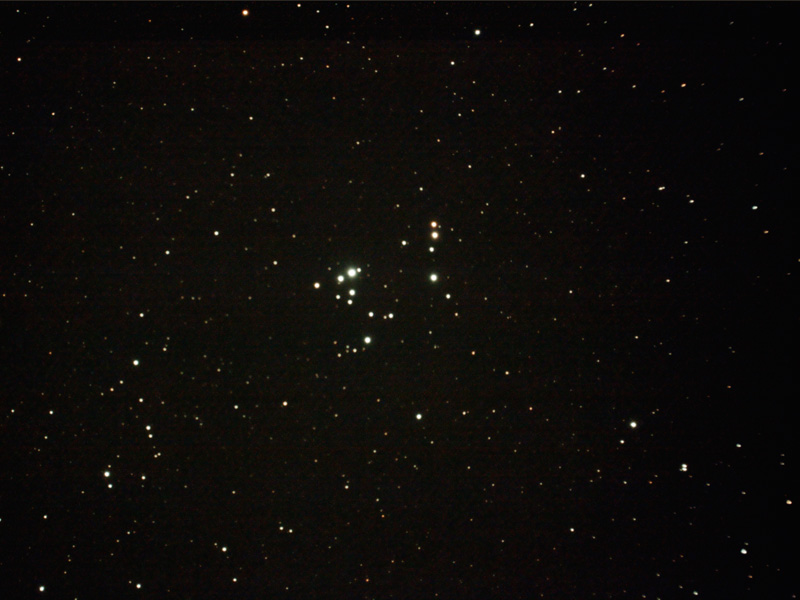NGC 2169
Constellation: Orion
R.A.: 06h 8.4 m
Dec.: +13°57′
Apparent Magnitude: 5.9
With a tip of the hat to astronomer Phil Platt in his column for SyFy Wire, and an assist from Star Gaze Hawaii, this month’s corner looks at a little known star cluster that is a fun deep sky object to track down. Along with asterisms such as “The Hanger”, and “Kemble’s Kite”, the “37” Cluster is a unique arrangement of stars.
NGC 2169, commonly called the “37” Cluster from its appearance as letters or numbers written in the stars, is a little known cluster in the constellation Orion. Unlike most open star clusters that are arranged in random patterns, NGC 2169 appears as the number “37”. Smaller telescopes see the letters “XY” and larger telescopes and astro-images see the number “37” as dimmer stars become visible with increased apertures. The winter months are the optimum time to observe NGC 2169 with Orion high in the sky and the wintery months transparent night skies. NGC 2169 is a good alternative to observing M42 and M43.
Historically, the cluster may have been discovered by Hodierna prior to 1654. Our old friend William Herschel discovered and documented his discovery of the cluster on October 15, 1784. The cluster has since be studied and is composed of componentsCollinder 38, a I3pn open cluster, and Collinder 83, a III3m open cluster.
Open star clusters are formed from hydrogen molecular clouds that have condensed into stars and are loosely gravitationally bound into groups. The “37” Cluster is an open cluster made up of about 30 stars of 6thmagnitude and dimmer. It is not naked eye visible. NGC 2169 is located north of Betelgeuse near Nu and Xi Orionis. The estimated age of NGC 2169 is approximately 8 million years old. The brightest member is a type B star which has a projected life of less than 1 billion years. There are various colors visible in images indicating various masses and spectral types. There is a yellow star of type G2 that would be an analog of our Sun with a projected life of about 10 billion years. One of the dimmer members is a red giant of type B6 which has already run out of Hydrogen and is between 4 and 8 times the mass of our Sun. The dim star that makes the top bar of the “7” is 11thmagnitude and requires larger apertures to be seen at all and is white in color.
In refractors and Schmidt-Cassegrain telescopes, the view of the cluster will be mirror reversed, so the “37” will need some interpretation. Newtonian telescopes will display the true arrangement and reveal directly the 37. The letters “YX” may be easier to decipher in reversed telescopes. An image corrector can reduce brightness by about 20% and are not recommended for small telescopes. My SCT 11″ telescope that have enough light grasp to see the mirrored image through a 2” diagonal, and a corrected image through an 1-1/4” erecting diagonal. My 102mm apo with a regular 2” diagonal shows the “YX” formation. The cluster is only 7′ across, so moderate to moderately-high power maybe needed to see this cluster.
Have fun tracking NGC 2169 down!
NGC 2169 photo courtesy of Star Gaze Hawaii
